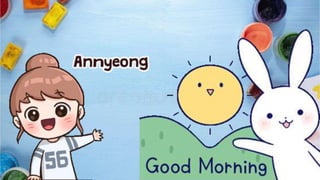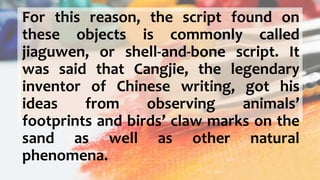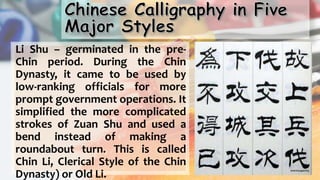This document discusses several principles and techniques of East Asian art. It describes various types of balance in painting including symmetrical, asymmetrical, and radial balance. It also discusses elements like proportion, repetition, rhythm, unity, variety, and harmony. The document provides examples of art forms from China, Korea, and Japan including calligraphy, painting, origami, masks, and theater makeup. It explains artistic traditions and the symbolic meanings of colors in different cultures.

































































